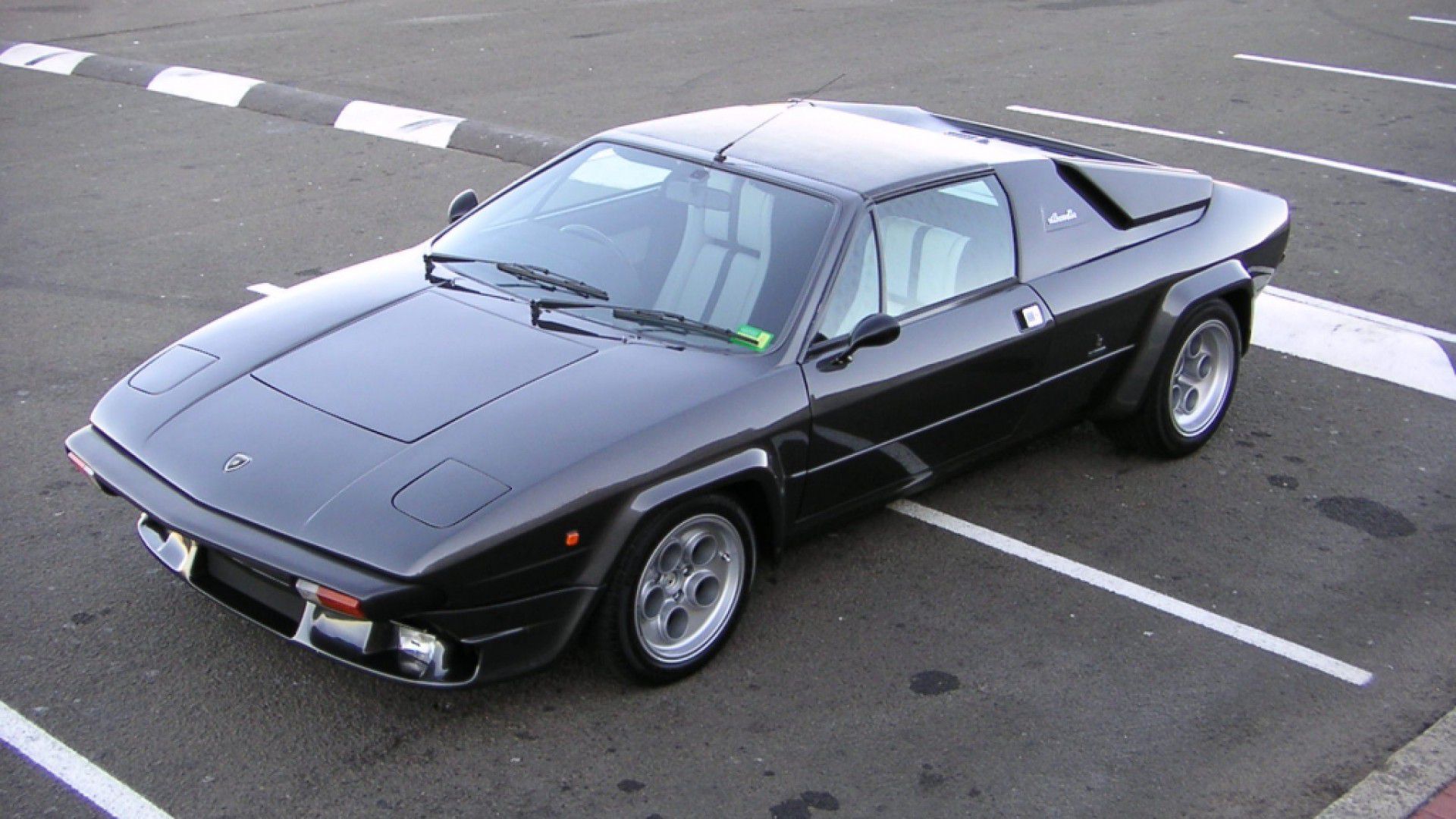Lamborghini Silhouette
The Lamborghini Silhouette is a held in Targa style sports car of Italian car manufacturer Lamborghini. The internally designated as P118 model supplemented the 1971 presented mid-engined coupe Urraco; it was also the predecessor of the Jalpa introduced in 1981. The Silhouette was the first open Lamborghini, which was produced in series. Lamborghini tried with this model to compete with the Porsche 911 Targa and open to the Ferrari 308 GTS. The Selling name of the vehicle took contrary to the previous brand tradition not to bulls or bullfighting terms, but referred to the formula silhouette, a discharged 1976-1980 Group 5 Championship FIA for standard sports cars.
The silhouette was derived directly from Lamborghini Urraco. Its outer form and technique corresponded to the Urraco broadly. In contrast to the closed, 2 +2- seater Urraco Silhouette, however, was designed as a Targa Coupe, that had a removable roof section above the seats. The concept of the silhouette as Convertible replacement necessitated compared to Urraco some changes in the body region; Also the chassis was modified.
The body of the silhouette in turn was designed by Bertone designer Marcello Gandini. He took over the basic structure of the Urraco body, but he succeeded in the silhouette to provide a separate note. The front end was identical to the Urraco, as the shape of the doors (except for the missing door frame) and the rear end. However, was behind the door, a massive rollover bars, which was trapezoidal shape of the vehicle was stability. The sloping rear end was on both sides with eye-catching, black-painted plastic covers that zuführten the engine cooling air and served in the rest of the optical variations. The rear window was nearly vertically behind the seats; the characteristic slats of the Urraco accounted for also. Also new were broadened and now trapezoidal wheel arches, which cited the shape of the roll bar. They offered space for the Pirelli P7 tires recently used, the dimensions 195/50 (front) and 285/40 (rear) and had sat on magnesium rims in five-hole design by Campagnolo.
Unlike the Urraco, Silhouette was a pure two seater. Behind the driver and passenger seat, the plastic roof panel could be accommodated.
Inside, the instrument panel has been completely redesigned. All instruments were combined in a housing behind the wheel. The new dashboard has been widely interpreted as a ergonomically advantageous.
The technology of the Urraco was slightly revised by new Lamborghini chief engineer Franco Baraldini, the successor to Paolo Stanzanis, for the silhouette. The chassis had front MacPherson struts with lower wishbones and anti-roll bar. The rear suspension also consisted of MacPherson struts, but with lower wishbones and anti-roll bar. The springs and dampers were harder than the Lamborghini Urraco designed, and the stabilizers were stronger.
Power was known from the Urraco P300 3.0-liter eight-cylinder engine with four overhead camshafts, which had been developed by Paolo Stanzani. Apart from a power increase to 260hp (191 kW), he was adopted without change. As in the Urraco he was installed as a mid-engine transversely in front of the rear axle and drove over a fully synchronized Lamborghini five-speed gearbox to the rear wheels.
The braking system came from Girling. The discs had a diameter of 275 mm. The silhouette was equipped with a dual-circuit brake system and brake booster. He had a rack and pinion steering without power assistance. The driver needed as the Urraco four turns lock-to-lock.
The Lamborghini Silhouette was developed in the course of 1975 and presented in March 1976 at the Geneva Motor Show the public. The new model was well received by the press; in particular gave the impression that the silhouette had the deficits of Urraco largely overcome. Lamborghini hoped to sell the silhouette in large numbers in America, so the company that has for some time serious in a economic crisis was to open up new revenue. However, Lamborghini succeeded in the following months, not to homologized the silhouette for the American market, so it could not be sold there. Only four vehicles (chassis numbers 40 066, 40 068, 40 074 and 40 076) were prepared in a U.S. specification. They were imported sole responsibility of the respective buyers and had a abgasentgiftete engine with significantly lower power.
The silhouette was only produced for two years. Already in October 1978 had to stop production of the silhouette – just like the Urraco and the Jarama be stopped for financial reasons. The first car (chassis number 40 006) was completed in September 1976, the last (chassis number 40,074) was delivered in November 1978.
A total of 52 copies of the silhouette for the sale were made, nine of which were delivered with right-hand drive. There were two prototypes made in 1976, which remained in the factory. A copy of the silhouette (chassis number 40,058) was restructured in 1980 as a prototype to the model Jalpa.
The lack of success of the silhouette is usually due primarily to the lack of access to the American market. Added to this was the still very poor workmanship of the car and the light of the economic difficulties uncertain future of the Lamborghini brand, which deterred many buyers.
At the Turin Motor Show 1980 Lamborghini Athon was presented. The design of only 1.07 m high Athon came from Marc Deschamps, a designer Carrozzeria Bertone the. It was a flat, square framed open car without folding top. Technically, he was completely based on the Lamborghini Silhouette. Inside, the very futuristic instruments fell on. In addition, the Athon was one of the first cars with an integrated on-board computer. From the Athon was only built a single copy, which was fully functional. Due to the economic situation Lamborghini series production was never intended, and the design also influenced any of the following Lamborghini models. Bertone presented the Athon forth on its own initiative to assist Lamborghini.
160260
